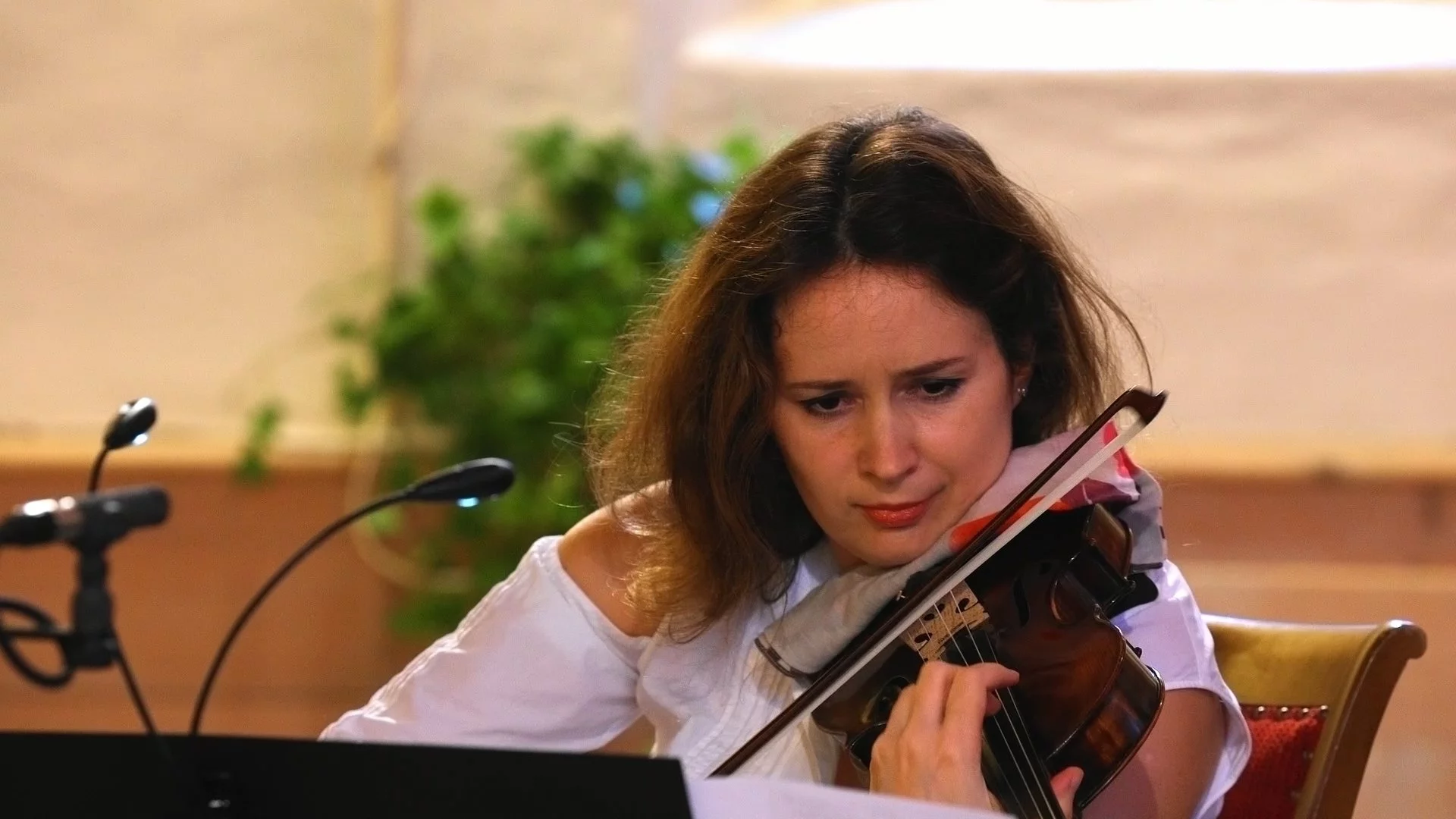The importance of the violin
Patricia Kopatchinskaja, violin
Polina Leschenko, piano
Béla Bartók (1881–1945)
Sonata for violin No. 2 Sz. 76 25’
Molto moderato
Allegretto
Recorded at Zweisimmen Church, 13th August 2018
Patricia Kopatchinskaja, Polina Leschenko and Béla Bartók
The great violinist Patricia Kopatchinskaja plays to the 2nd violin sonata by Béla Bartók together with pianist Polina Leschenko.
The special role of the violin
In Béla Bartók’s works the violin has a special role. The first reason for this is the key role that the violin plays in Eastern folk music, which Bartók studied and researched during his whole life. Bartók had several professions during his lifetime: composer, pianist, piano teacher and ethnomusicologist. During the semesters he taught piano in Budapest, whereas during the holidays he traveled to the most remote locations in order to record the music of various communities. His research also had an impact on his compositions as he used folk melodies that he recorded in his own works. The second reason are the brilliant violinists that he was in contact with. Amongst them are Jószef Szigeti and Zoltán Székely for the two rhapsodies from 1928 and Jelly d’Arányi for the two sonatas. D’ Arányi was an extraordinariy virtuoso, born in 1893 in Budapest as the niece of Joseph Joachim. She is mainly known for the world premiere of Ravel’s Tzigane which was dedicated to her, and for the rediscovery of Schumann’s Violin Concerto.
London World Premiere
Bartók composed both sonatas in 1921, and are both dedicate to Jelly d’Arányi. The world premiere of the sonatas took place in 1922 and 1923 respectively. Jelly d’Arányi played the violin part, accompanied by Bartók at the piano.
My curiosity drives me to look for musical borders, says Patricia Kopatchinskaja about herself and her artistry. Her concert programme encompass all repertoires, from Baroque played on gut strings, to world premieres or re-interpretations of contemporary pieces. Polina Leschenko was born in St. Petersburg into a family of musicians and gave her debut at the age of eight with the symphony orchestra in St. Petersburg. Both musicians are stars on their respective instrument and achieve a beautiful symbiosis of sound in Bartók’s piece.



